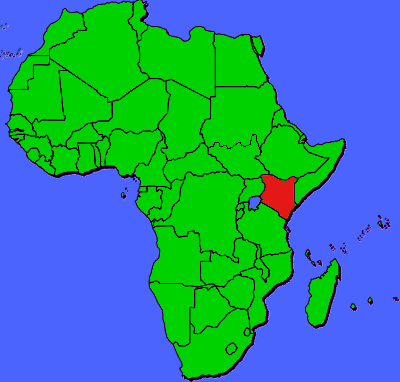
Circle the area on this map

A. Wildlife conservation groups say that Asia, and China in particular, are the key consumers in an industry that encourages the slaughter of some 30,000 African elephants a year. In the 1970s, Africa had about 1.2 million elephants, but now has 400,000 to 450,000.
A. The African continent is bounded by the Atlantic on the west, Mediterranean on the north and the Red Sea and Indian Ocean to the east. Kenya is on the Indian Ocean and straddles the Equator as does Gabon.
C. Wealthy customers in Vietnam (the only one of these nations in southeast Asia) began snapping up rhino horn in the early 2000s when a rumor started that it had cured a politician’s cancer. Rhino horn is just keratin, like your fingernails. War-torn Yemen used to buy a great deal of the smuggled horn to make handles for daggers.
B. A growing middle class in 19th century England spurred demand for ivory items such as Victorian billiard balls and cutlery handles. Britain ruled Kenya from 1988 until 1962. China is trying to reduce the demand for ivory from its growing middle class by educating people about the impact on African elephants.